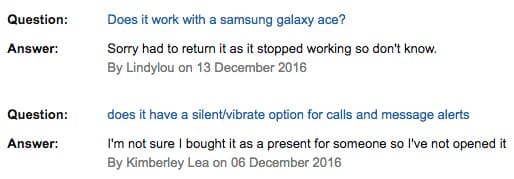

Optimized listings on Amazon are easily discoverable, have high click-through rates (CTR), have high conversion rates, and get more sales as a result. It sounds simple enough to start selling on Amazon, right?
Wrong.
95% of Amazon sellers fail within the first 12 months. Product listing optimization on Amazon in 2022 requires a whole new set of strategies and tips to rank in search results.
Optimization =! Best Practices

Photo by NisonCo PR and SEO on Unsplash
You’ve likely heard the importance of things like relevant keywords and product images for your Amazon listing. Most how-to’s focus on keyword optimization, product title, and bullet points for Amazon listing optimization. These are good tips that result in good product listings, but good Amazon listings don’t sell.
The truth is, most advice out there is too vague to be helpful, and some tips (even from Amazon itself!) are plain wrong. They’re not telling you what makes a good listing great, they’re only telling you what the starting standard is. Not exactly the definition of “optimized,” is it?
If you haven’t gotten started with some search engine optimization basics like search terms and backend keywords for your Amazon listing, tackle those areas first before starting these 6 steps. If you’re already aware of common best practices, you can use these 6 hidden steps for Amazon listing optimization to make sure you’re in the 5% of successful professional sellers in 2022.
Step 1: Stand Out in Product Categories with External Traffic

The external traffic you bring influences how optimized Amazon’s algorithm considers your listing and should play a key role in your Amazon SEO strategy.
Why is that? Firstly, impressions carry more weight in the a10 algorithm. A10 isn’t like other search engines. The current version of Amazon’s search engine algorithm is a10, and the biggest changes between the a9 and a10 algorithms all have to do with how much a10 uses “credibility” to determine listing rankings. Impressions play a big role in how the algorithm determines your listing’s credibility.
Secondly, all of your competitors are optimizing their product listing for organic, on-site sales. They’re buying up Sponsored Product Ads, testing search terms, and doing practically anything else they can on Amazon to out-rank you in your product category. Taking your strategy offsite and on other apps brings in more sales from areas with less competition, and the traffic makes you stand out as an Amazon seller. Many sellers have even used TikTok to make their Amazon product Internet Famous.
You don’t necessarily have to start setting up a Google Ad to get it either: Amazon listings can get external traffic through social media, blog posts, influencer marketing, and more.
Even if you have your own website, you should consider directing customers to Amazon’s online marketplace. The boost in Amazon SEO isn’t enough for you to merge your Amazon marketing strategy with your other sales funnels, keep in mind that conveniences like Prime Shipping could increase customer satisfaction and help you provide the good customer service required for even more revenue long-term.
Step 2: Don’t Follow (Some) Amazon Listing Optimization Guidelines to Keep Relevant Keywords
To be clear, you should follow all of Amazon’s policies. Don’t throw out the Amazon seller rulebook and expect to do well; this is only referring to best practices that have some wiggle room.
Which listing looks optimized to you?

Source: Gorilla ROI
One breaks best practices to selectively add more than generic keywords in the title, bullet points, and product description, and add more descriptive terms in the title and bullet point section. The other followed guidelines.
These guidelines help make listings more uniform and basic so the site isn’t a mess and shoppers can make easy comparisons. They shouldn’t be ignored entirely but as Gorilla ROI points out, there comes a point where short and sweet won’t optimize your Amazon product listing or boost your click-through rate.
Don’t stuff all the keywords you can into your product title, product description, and bullet points. But consider making thoughtful exceptions for important keywords and descriptive terms for key product features.
Step 3: Use Product Images, Video, and A+ Content for Emotional Appeal

Photo by Firmbee.com on Unsplash
A lot more goes into product image optimization and visual content than the right image frame and white background. Your Amazon listing should help your target audience visualize your product’s features. Product images, video, and A+ content optimize your Amazon product listing by helping potential buyers visualize:
- Dimensions – how big/small is it? Even if you add this in descriptions, shoppers should be able to roughly estimate through your photos.
- Materials – especially important for products like clothing.
- Different Angles – what does the back of it look like? What about close up, or further away?
- Usage – what does the fit look like on a model? How would my child interact with the toy? How can this tool be used?
- Benefits – this is not the same as product features. Use simple text and/or imagery to convey the results your product achieves for the buyer.
Whatever aspect(s) your main image can’t cover, your additional images and video should. Guidelines like “don’t include props” might prevent you from providing context in your main image. The rules for optimizing product images and video beyond main images are much more lenient and give you the freedom to add this context to your listings while still following site standards.
Use A+ content to visually summarize. A+ content (formerly Enhanced Brand Content) is not indexed so keyword rankings aren’t important. It’s especially useful for additional images and charts that help visually summarize your product description to the buyer. It’s a largely underutilized area of listings that isn’t as important as things like bullet points but can give your listing an advantage.
Step 4: Pay Attention to Your Q&A Section

Photo by Towfiqu barbhuiya on Unsplash
How embarrassing would it be to have high-quality images, good bullet points, and perfect promotional messages that catch a potential buyer’s eye, only for them to scroll down to the Q&A section and see this:

Source: Twitter.com
Unmanaged Q&A sections look unprofessional to potential customers searching through your product description. Nothing is stopping previous buyers from giving incomplete or inaccurate answers or negative feedback. Don’t underestimate what this can do to conversion rates or your likelihood of a bad product review because a buyer was misled by incorrect answers.
All of these scenarios affect your product detail page, which affects your product ranking. Keep an eye on the questions that pop up for your product so you can answer them properly before anyone else does.
Step 5: Base Your Prices on Your Listing’s Strength
To optimize your product click-through rate, base your prices on how strong and optimized your listing is. A brand new listing without the credibility of good reviews and ratings won’t be able to increase rankings quickly if it’s priced just as high as established ones and won’t entice potential buyers as much if the product is not unique or is in a highly competitive category.
Many sellers start out at a net loss and slowly increase prices as the reviews, ratings, and traffic start coming in. This pricing strategy does help optimize your product listing, but it’s a calculated risk sellers make with a firm understanding of their numbers. It’s also a sacrifice that not every seller can afford to make.
Regardless, if you’ve put in the effort towards listing optimization and it’s still not getting the traction it needs to rank well, consider whether your prices are a factor keeping people from clicking and how much room you have to change them. In many cases, a slight decrease in profit margins is all that’s needed to bring in sales and traffic to your product pages that pay off several times over in the long run.
Step 6: Use Ads Regularly for Amazon Listing Optimization (and Keyword Research)

PPC ads are one of the first strategies mentioned for Amazon listing optimization. Sponsored Product Ads are a must for making strong Amazon product listings and should be seen as much more than a temporary boost in traffic and sales. With the right setup, they can be used to harvest keywords or even steal traffic directly from a competitor’s product pages.
The biggest mistake a seller can make is not considering ads as a continuous part of their overall selling strategy. There are a few reasons why this is true:
- If you use Sponsored Product ads to find keywords, doing so only once or too rarely won’t provide optimal results. You won’t be able to keep up with changing trends in search terms and relevant keywords, and you won’t be able to refine your frontend and backend keywords enough.
- Ads can boost your ranking in search results even after the campaign ended, but this boost fades over time. Regular campaigns provide a consistent boost in search visibility in Amazon’s search results.
- Sponsored Ads are an affordable method to keep your product listings from falling behind in dynamic and competitive markets (and few sellers are not in a dynamic, competitive market). Even small campaigns can give important insight into what audiences to target and how to target them best or alert you to changing trends if you run them more regularly.
The biggest reason why you should make ads a regular part of your Amazon product listings optimization strategy is in plain view on search results pages – just look at how many are Sponsored Ads.
Some see Amazon ads as a pay-to-win strategy because of this. They’re not entirely wrong, but it’s more accurate to see ads as a necessary part of selling on Amazon because your listing optimization will always be one step behind competitors who are using ads for maximum results – and most sellers are.
Strategic ad campaigns are important to enhance product discoverability, but the keyword here is “strategic.” To make sure your ads are set up in the best manner possible to help reach your goals, you need a lot of time to learn how Amazon ads work and how to optimize your ad spend. It’s possible to do it on your own if you’re starting out as a small Amazon Marketplace seller with only a couple of products, but most Registered Brands and dedicated entrepreneurs hire Amazon advertising agencies that have the time and experience to deliver the best ads and optimization service for their Amazon product listings.
Conclusion
In conclusion, there’s a lot more to optimizing your product listings than typical SEO tasks like keyword research. The highest-ranking listings on Amazon incorporate these 6 steps into their optimization strategy. If you’re not seeing the results you want, it’s time to revisit your listing and consider implementing them to optimize the lesser-known factors that influence your ranking in the algorithm.
There’s a lot more to Amazon listing optimization than we could fit into this article too – like optimizing Amazon keywords for mobile devices or brand registry – so check out our other articles about Amazon ads and tips for sellers for more helpful guides and inspiration.

